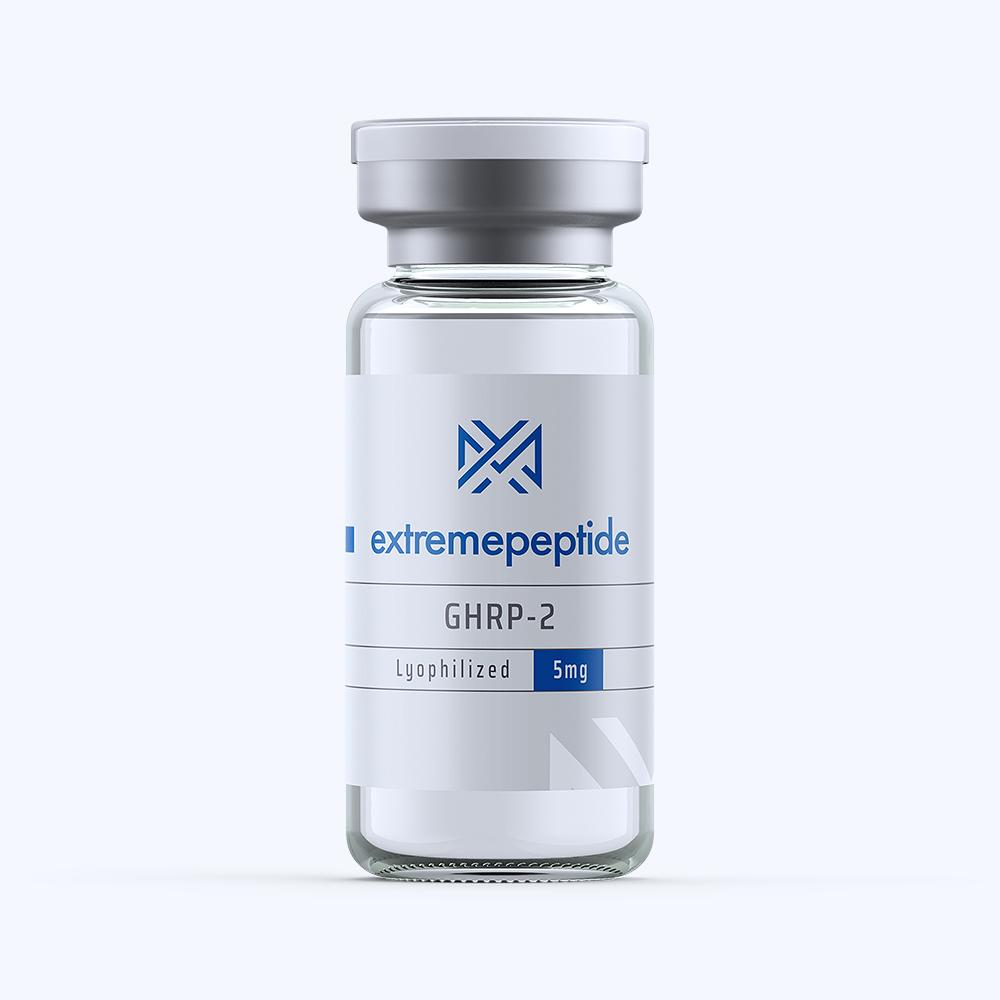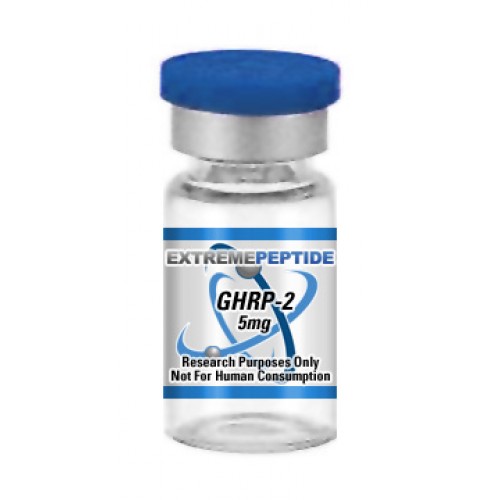GHRP-2, also known as GHRP or KP-102, is a secretogogue peptide whose structure is comprised of a half-dozen amino acids. It has a molecular mass of 817.9, and its molecular formula is C45H55N9O6.
The Properties of GHRP – 2
According to scientific study on animal test subjects, GHRP – 2’s chief function is to boost the natural expressions of secretions that are responsible for growth. This is partially due to the peptide’s ability to stimulate the pituitary gland; the pea-sized gland found at the base of the brain that is responsible for the regulation of several endocrine-related functions, including:
- Growth
- Pain relief
- Blood pressure regulation
- Temperature regulation
- Water regulation within the body
Specifically, the peptide is able to promote an increase in the secretions from somatropic cells that primarily relate to growth. This then allows an animal test subject to experience an increase of protein synthesis. This increased process is further boosted by the peptide’s ability to block the production of somatostatin; a peptide that is responsible for regulating the endocrine system and affecting the neurotransmission of cell proliferation through interaction with G protein-coupled receptors. Further studies have also shown that GHRP – 2 can promote an increase in the production of IGF – 1, also known as somatomedin C. This protein, which is produced by the liver in animal test subjects, is an endocrine-related secretion that is instrumental in the repair and growth of muscles and tissues. Additionally, the peptide has been to increase the levels of calcium ion influx; a process that can also stimulate the production of secretions related to growth.
GHRP – 2 and Appetite

Scientific study has also determined that GHRP – 2’s presence can have a profound impact on an animal test subject’s appetite.
The primarily reason for this is due to GHRP – 2’s ability to stimulate the production of ghrelin. This self-regulating 28 amino acid peptide is primarily produced by the stomach, although it can also be secreted by epsilon cells found in the pancreas. The purpose of ghrelin is to stimulate the sensation of hunger in animal test subjects. GHRP – 2’s inherent functionality causes an increase in the production of ghrelin; a process that causes an animal test subjects a desire to consume more food.
Additionally, GHRP – 2 has also been shown to boost the functionality of the hypothalamus; the part of the brain that serves as a link to the endocrine and nervous system. Studies on animal test subjects show that this boost in functionality also plays a role in the increase of appetite.
This functionality works in conjunction with GHRP – 2’s ability to increase the secretions from the pituitary gland. An increase in the sensation of hunger within animal test subjects leads to a desire to consume more food. When this increase of food intake occurs, the peptide’s ability to increase protein synthesis allows the body to use this extra fuel as a means to compensate for this elevated function. Ultimately, this entire process provides the animal test subject with an elevated level of homeostasis.
GHRP – 2’s Theorized Benefits and Side Effects
According to scientific study conducted on animal test subjects, it has been determined that GHRP – 2’s functionality can be tied to several theoretical benefits. Some of these benefits include: a more efficient means of muscle mass growth; an increased ability to repair tissue; an elevated means of breaking down body fat; a lowering of cholesterol levels; an enhanced sense of anti-inflammatory action; improved bone density; and an enhanced defense of the liver.
Conversely, scientific study on animal test subjects has also linked a few negative side effects to GHRP – 2’s presence. These negative side effects include: An increase in water retention; an increased instance of fatigue; development of tightness and/or carpal tunnel-type symptoms; a tingling and numbness in the extremities; and a decrease in insulin sensitivity. That being said, these scientific studies have determined that there have been fewer instances of negative side effects associated with GHRP – 2 then there have been with other peptides that have exhibited similar methods of functionality.
